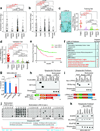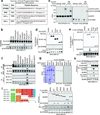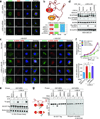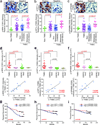The LINK-A lncRNA activates normoxic HIF1α signalling in triple-negative breast cancer
- PMID: 26751287
- PMCID: PMC4791069
- DOI: 10.1038/ncb3295
The LINK-A lncRNA activates normoxic HIF1α signalling in triple-negative breast cancer
Abstract
Although long non-coding RNAs (lncRNAs) predominately reside in the nucleus and exert their functions in many biological processes, their potential involvement in cytoplasmic signal transduction remains unexplored. Here, we identify a cytoplasmic lncRNA, LINK-A (long intergenic non-coding RNA for kinase activation), which mediates HB-EGF-triggered, EGFR:GPNMB heterodimer-dependent HIF1α phosphorylation at Tyr 565 and Ser 797 by BRK and LRRK2, respectively. These events cause HIF1α stabilization, HIF1α-p300 interaction, and activation of HIF1α transcriptional programs under normoxic conditions. Mechanistically, LINK-A facilitates the recruitment of BRK to the EGFR:GPNMB complex and BRK kinase activation. The BRK-dependent HIF1α Tyr 565 phosphorylation interferes with Pro 564 hydroxylation, leading to normoxic HIF1α stabilization. Both LINK-A expression and LINK-A-dependent signalling pathway activation correlate with triple-negative breast cancer (TNBC), promoting breast cancer glycolysis reprogramming and tumorigenesis. Our findings illustrate the magnitude and diversity of cytoplasmic lncRNAs in signal transduction and highlight the important roles of lncRNAs in cancer.
Figures






References
MeSH terms
Substances
Grants and funding
LinkOut - more resources
Full Text Sources
Other Literature Sources
Molecular Biology Databases
Research Materials
Miscellaneous

